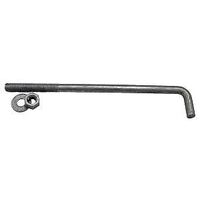Just wondering if any of you have seen this or used it.
Works really well and solves a lot of problems consistant with deck to house attachments.
Our Products provide a Revolutionary method of attaching Decks, Stairs, Signs and other appendages to buildings. Both the Bracket AND the attachment system methods are patented.
http://www.deckbracket.com/9series/1.jpg
The sheithing is cut out to expose the box sill.
http://www.deckbracket.com/9series/2.jpg
The Maine Deck Bracket is bolted to the sill With 1/2" bolts,washers on the inside.
http://www.deckbracket.com/9series/3.jpg
A small slot is cut in the siding for the web of the bracket to go through.
http://www.deckbracket.com/9series/4.jpg
The slot is small so as to leave no significant entry point for water or insects.
http://www.deckbracket.com/9series/5.jpg
The slot is then caulked with silicone, caulking , sealing out moisture and insects.
http://www.deckbracket.com/9series/6.jpg
The Maine Deck Brackets make a nice neat job on the building.
http://www.deckbracket.com/9series/7.jpg
The brackets are ready to receive the deck framing.
http://www.deckbracket.com/9series/8.jpg
The double ledger is used so that you can span the distance between brackets safely.
http://www.deckbracket.com/9series/9.jpg
The deck is now framed and ready to cover.
1 1/2" spacing between decking and siding is recomended for an air space.
Marcel


